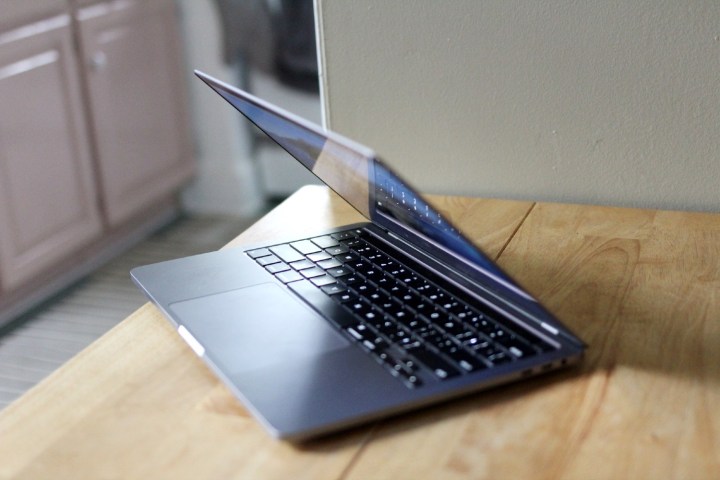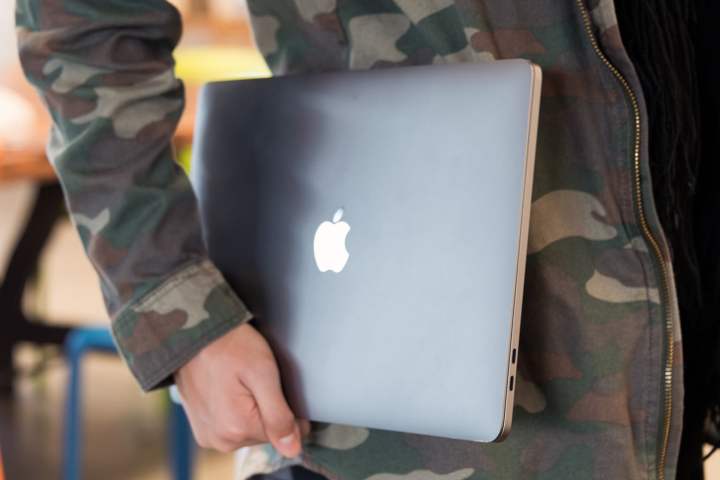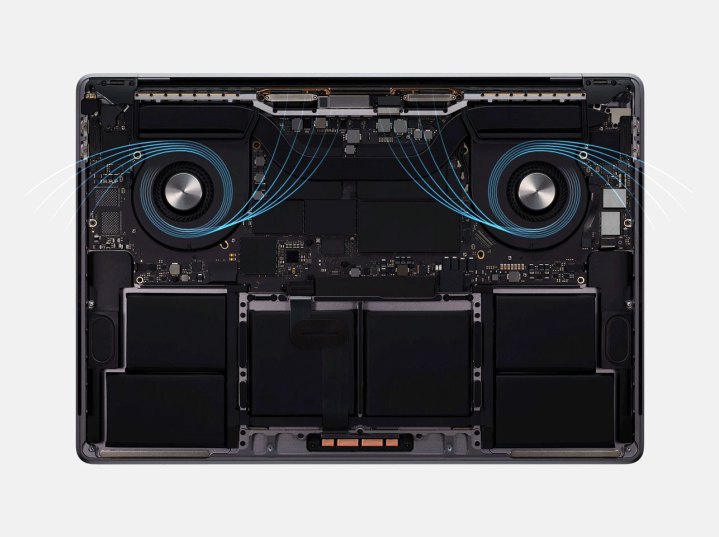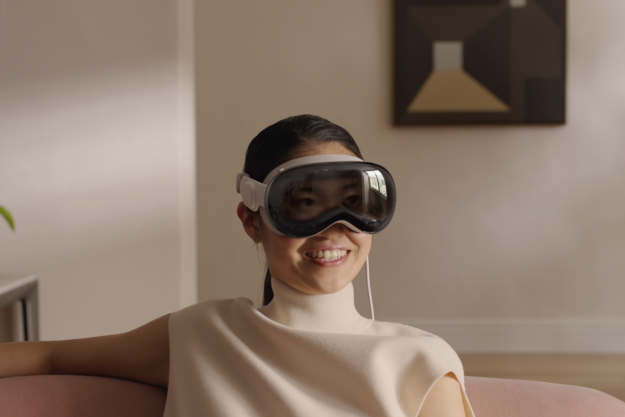With new Apple Silicon Macs expected before the end of 2020, it’s time to say so long to Intel. While the first MacBook Pro of the new era is expected to be a relatively minor update that swaps out the processor and little else, there are rumors afoot that Apple has something much more interesting in the works.
According to industry whispers, Apple is planning to release a 14-inch MacBook Pro that will completely overhaul the company’s smallest Pro laptop. Much like how the MacBook Pro 16 replaced the MacBook Pro 15, slimming down its bezels and introducing a wealth of welcome new features, so the 14-inch MacBook Pro is expected to do the same for the MacBook Pro 13. Here’s everything we hope to see in this exciting update.
Price and release date

Throughout the summer, rumors pointed toward a 14-inch MacBook Pro release date of either late 2020 or early 2021. As the year has progressed, those expectations have shifted to the latter of the two possibilities. For one thing, we know that Apple likes to play things safe, only releasing new tech when it is sure the time is right. With a shift as momentous as the transition to its own processors, there is a good chance Apple will take things one step at a time, introducing the new processors first before radically redesigning one of its most popular Macs.
Analysts and leakers are also signaling a 2021 release date.. Respected industry analyst Ming-Chi Kuo, for example, has said Apple’s first Mac on its own platform could be a 13-inch MacBook Air or a 13-inch MacBook Pro. If Apple does indeed launch an Apple Silicon MacBook Pro 13 in late 2020, it would surely give that device some time to breath before phasing out the 13-inch model entirely. Leaker L0vetodream — who has been unerringly accurate in the past — has also chipped in, saying they expect the 14-inch MacBook Pro to launch in 2021.
The price remains largely unknown. When Apple launched the MacBook Pro 16, with its many design changes and new features, it impressively managed to keep the price the same as the MacBook Pro 15. We are hoping that the MacBook Pro 14 will keep the same $1,299 starting price as the MacBook Pro 13. However, do not be surprised if the price does increase — as we detail below, the Mini-LED display that the MacBook Pro 14 is expected to have could be very expensive indeed.
An all-new screen size

The most obvious change that we expect is the new display size. This will not affect the device’s footprint, though — slimming down the bezels will allow Apple to outfit the laptop with a roomier screen in the same chassis. Don’t expect the bezels to be as tiny as some of the other best laptops, but they would be an improvement over the current design. The change would also bring the MacBook Pro range closer together: Instead of having two variants with noticeably different designs, the 14-inch and 16-inch MacBook Pro models would look much more similar.
What else could we see in terms of the display? Well, the 14-inch MacBook Pro is also rumored to come with a new mini-LED screen, a display technology that rivals the OLED screens other laptops have moved to, but which doesn’t have the burn-in issues OLED displays can suffer from. This tech packs in far more LEDs than conventional displays can manage — up to 10,000, according to some estimates — for brilliant brightness and exceptional colors. It is expected to be very expensive, though, so prepare for some potential sticker shock.
Apple Silicon: The MacBook Pro 14’s engine room

Here’s something worth betting the farm on: The MacBook Pro 14 will come with an Apple Silicon processor. How can we be so sure? After all, Apple said at its Worldwide Developers Conference that it still had Macs with Intel chips in its pipeline.
Well, look at it this way: If you are Apple and you are completely overhauling one of your most popular Macs with an all-new design and feature set, would you really power it with a processor that you are publicly moving away from? That would be a nod to the past, and from Apple’s perspective, the MacBook Pro 14 is all about the future.
So, what can we expect from Apple’s own ARM-based processors? The company has said it aims to combine exceptional performance with radically low power consumption — something ARM-based chips like the Apple Silicon series are already well-known for. According to Bloomberg, Apple wasn’t bluffing, with reporters claiming the first Apple Silicon processors will have eight high-performance cores and at least four energy-efficient cores, with the company working on 12-core versions for the future. That would be a huge step up over the current Intel offerings in Apple’s Macs, with the entry-level MacBook Air coming with a dual-core chip, for example.
As for performance, we have already had a few sneak peeks thanks to leaked benchmarks. For instance, early benchmarks from shortly after WWDC in June 2020 demonstrated Apple Silicon chips outperforming Microsoft’s own ARM-based processors. Even more impressively, Apple’s processors were running in an emulated environment, on software that was not optimized for Apple Silicon, and on a beta version of the MacOS operating system. In other words, it outstripped Microsoft’s best effort despite having to overcome numerous hurdles. When we finally see Apple Silicon running natively, it’s going to be something else in terms of performance.
Better battery life

For a few years now, the battery life in Apple’s MacBook Pro models has been fine. This is another area where we’d like to see some serious improvements, as the MacBook Pro 13 has been struggling to keep up with its rivals in this department. The 2016 model dropped the battery capacity from 74.9 watt-hours to 49.2 watt-hours; although that was bumped up to 58 watt-hours in 2018, it’s still some way behind alternatives like the 13-inch Surface Book 2, which lasted a whopping 17 hours in our video playback test.
Luckily, Apple nixed this worrying trend with the MacBook Pro 16. This device has a slightly thicker chassis in relation to its thermal architecture, but the increased dimensions also allow for a much larger battery. It’s the largest ever in a MacBook, in fact, hitting the 100 watt-hour maximum set by the Federal Aviation Administration (FAA) for being able to take laptops on airplanes.
We expect there is more good news to come thanks to Apple Silicon. As we said above, ARM-based chips are known for their excellent efficiency, something that helps extend battery life beyond what rivals can achieve. With the processor using less power than before while still maintaining strong performance, Apple may not need to increase the battery capacity in its smallest MacBook Pro at all. That would potentially leave more space inside the device for other components without sacrificing battery longevity.
A superior keyboard

It’s no secret that Apple’s butterfly keyboard has been unpopular, with numerous reports of its high failure rate dogging it over the years. Since 2016, the company has been trying to fix its issues with each new MacBook Pro, but in the end, it was forced to replace it with a newly developed “Magic Keyboard” in the MacBook Pro 16. This keyboard has a more conventional feel, with 1mm of travel, more space between each key, an inverted T-shaped set of arrow keys, and even a physical Escape key.
We’re almost certain this keyboard will come to the MacBook Pro 14. The reception to the new set of keys was almost universally positive, with our review lauding it as “the best Mac keyboard ever released” and a step above even the excellent keyboard on the 2015 MacBook Pro. Apple seemed to take that to heart, kitting out revisions of the MacBook Air and MacBook Pro 13 with the same keyboard. We would therefore be surprised if the MacBook Pro 14 did not follow suit.
There is only one slight caveat: Apple has publicly said it is continuing to work on the butterfly keyboard. There is a lot of chatter that the company is going to revive the previously abandoned 12-inch MacBook, which would likely come with the butterfly keyboard in order to keep it so ridiculously thin and light.
An all-new cooling system

The MacBook Pro 16 was slightly thicker than its 15-inch predecessor — a mere 0.03 inches chubbier, to be precise — but that size increase allowed for a hugely important change: An all-new thermal architecture.
In our review, we found the results to be staggering. Using the same processor as the previous 15-inch MacBook Pro, the 16-inch version managed to render a 4K clip in Premiere Pro in half the time of its predecessor. That’s a dramatic example of what the new thermal system is capable of, and suggests the throttling issues of the past could be far behind the MacBook Pro.
Bringing this cooling system to the MacBook Pro 14 would have obvious benefits. Aside from enabling better processor performance by keeping the device’s chip cool under pressure, it would also help reduce the impact on battery life. Anything that can provide a few more hours of use in a portable laptop is encouraging in our book.
Of course, a cooling system revamp on the scale of the MacBook Pro 16 may not be necessary in the 14-inch version, if Apple Silicon is as efficient as Apple promises. Still, we would expect some sort of update to the cooling system — Apple likes to bring innovations to every device in a product range where possible — and we certainly have no complaints about that.
What else do we want to see?

Laptops aren’t usually known for their speakers, but the MacBook Pro 16 is a remarkable exception, with our review declaring it to have “by far the best speakers you can find on a laptop.” We’d love for Apple to make it a double whammy by outfitting the MacBook Pro 14 with the same incredible audio setup.
Elsewhere, we’re disappointed that, years after its demise, Apple still hasn’t brought out a USB-C version of MagSafe. The clever charging tech saved untold numbers of laptops from being thrown to the floor when plugged in, and its absence is sorely missed. We know it’s possible — Griffin Technology has had a USB-C equivalent called BreakSafe since 2016, and Apple has patented a similar idea. We’d love to see Apple adapt MagSafe for the USB-C MacBook Pro 14.
On the subject of USB-C, we would also love to see more ports. Right now, the two cheapest MacBook Pro 13 models only have two Thunderbolt 3 ports apiece, and you must spend upward of $1,799 if you want four. Given that the purpose of a laptop is to be a mobile workstation that can connect to whatever devices you need wherever you happen to be working, two ports just aren’t enough these days. If Apple outfitted the entry-level MacBook Pro 14 with four USB-C ports, it’d be a step in the right direction.
Other additions to our wish list include Face ID, an improved Touch Bar, and some more color options. Given how much of an overhaul the 14-inch MacBook Pro could be, we think there is a good chance at least some of these will come our way when the device hits the shelves.
Editors' Recommendations
- Best refurbished MacBook deals: Get a MacBook Air for $140 and more
- Best laptop deals: Save on the Dell XPS 14, MacBook Pro 16 and more
- Best Apple deals: Save on AirPods, Apple Watch, iPad, MacBook
- The 5 best MacBooks for video editing in 2024
- MacBook Pro 16 vs. MacBook Pro 14: The important differences



